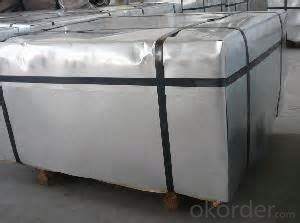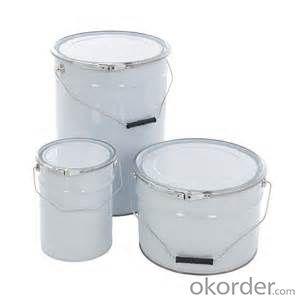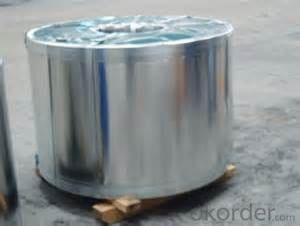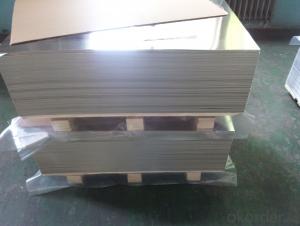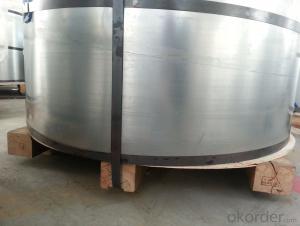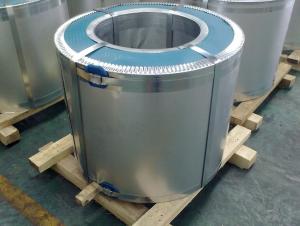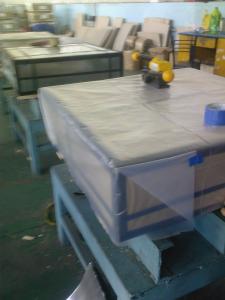High Quality of Tinplate for Paint Can
- Loading Port:
- China Main Port
- Payment Terms:
- TT OR LC
- Min Order Qty:
- -
- Supply Capability:
- -
OKorder Service Pledge
OKorder Financial Service
You Might Also Like
Our tin plate (TP) products are made by coating tin using electrolysis on the surface of thin coldrolled steel sheet (black plates), with a thickness of 0.14~0.6 mm. Its shiny surface finish, superb corrosion resistance and formability make tin plates an ideal choice for the food industry and industrial parts producers. Our tin free steel sheet (ECCS) is widely accepted as a more economical substitute for the tin coated steel. Our TP/TFS products are widely used in the production of 3-piece and 2piece (D&I, DRD) cans as well as can lids and bottoms. Our products serve a variety of purposes, including material for steel EOE, toys, and electronic parts.
Our Tinplates Specification:
Standard: ISO 11949 -1995, GB/T2520-2000,JIS G3303,ASTM A623, BS EN 10202
Material: MR,SPCC
Thickness:0.15mm - 0.50mm
Width: 600mm -1150mm
Temper: T1-T5
Annealing: BA & CA
Coil Inner Diameter: 508mm
Weight: 6-10 tons/coil 1~1.7 tons/sheets bundle
Passivation:311
Oil: DOS
Surface: Finish,bright,stone,matte,silver
Packing:
1、For sheets: plastic or waterproof paper, metallic cover and angles, steel strips,wooden pallet.
2、For Coils: plastic or waterproof paper,plastic protect plate,steel strips.
Both Prime and Second Quality Are Available!!!
- Q: How does tinplate perform in terms of resistance to mechanical stress?
- Tinplate performs well in terms of resistance to mechanical stress. Its sturdy and durable nature allows it to withstand various forms of mechanical stress such as bending, twisting, or impact. Additionally, the tin coating on the surface provides an added layer of protection, enhancing its resistance to corrosion and further strengthening its ability to withstand mechanical stress.
- Q: How is tinplate affected by exposure to oxygen?
- Tinplate is largely resistant to oxidation caused by exposure to oxygen. The tin coating on the steel plate acts as a protective layer, preventing the steel beneath from coming into direct contact with oxygen. This protective layer helps to maintain the integrity and prevent corrosion of the tinplate even when exposed to oxygen.
- Q: What are the environmental impacts of producing tinplate?
- The production of tinplate has several environmental impacts. The extraction and processing of tin ore can result in habitat destruction, deforestation, and soil erosion. The smelting process emits greenhouse gases, contributing to climate change. Additionally, the use of chemicals during production can contaminate water sources and harm aquatic life. Proper waste management and adopting more sustainable practices can help mitigate these impacts.
- Q: How does tinplate contribute to the overall tamper-evident packaging?
- Tinplate contributes to tamper-evident packaging by providing a durable and secure material that is difficult to tamper with. Its strength and rigidity make it resistant to punctures or tears, ensuring that the packaging remains intact until it reaches the consumer. Additionally, tinplate can be sealed tightly, preventing unauthorized access and providing a visible sign of tampering if the seal is broken. Overall, tinplate enhances the safety and integrity of tamper-evident packaging, giving consumers confidence in the quality and authenticity of the product.
- Q: How is tinplate different from aluminum packaging?
- Tinplate is different from aluminum packaging in terms of material composition and properties. Tinplate is made of steel coated with a thin layer of tin, which provides corrosion resistance and enhances the durability of the packaging. On the other hand, aluminum packaging is made entirely of aluminum, offering lightweight and excellent thermal conductivity. Additionally, tinplate is more cost-effective and commonly used for canned food and beverage packaging, while aluminum packaging is preferred for its recyclability and use in various industries, including food, pharmaceuticals, and cosmetics.
- Q: What are the main challenges in tinplate coating thickness control?
- The main challenges in tinplate coating thickness control include achieving uniform coating thickness across the entire surface, ensuring consistent adhesion of the coating, minimizing defects such as pinholes or streaks, and dealing with variations in the tinplate surface and composition. Additionally, maintaining precise control over the coating process parameters, such as temperature and speed, is crucial to achieving accurate and desired coating thickness.
- Q: What are the main regulations governing tinplate recycling?
- The main regulations governing tinplate recycling vary by country and region. However, some common regulations include waste management laws, recycling targets, and regulations regarding the collection, sorting, and processing of tinplate materials. These regulations aim to promote the proper disposal and recycling of tinplate, ensuring environmental sustainability and resource conservation.
- Q: What is the process for printing on tinplate?
- The process for printing on tinplate typically involves several steps. First, the tinplate sheets are cleaned and coated with a layer of primer to ensure proper adhesion of the ink. Then, the desired design or artwork is printed onto the tinplate using specialized printing techniques such as lithography or offset printing. After the printing is complete, the tinplate is usually coated with a protective varnish or lacquer to enhance its durability and resistance to corrosion. The printed tinplate sheets can then be further processed into various products, such as tin cans or decorative tin containers.
- Q: How does tinplate handle exposure to chemicals and solvents?
- Tinplate is generally resistant to exposure to chemicals and solvents due to its protective tin coating, which acts as a barrier against corrosion and chemical reactions. This makes tinplate a reliable choice for packaging and storing various products that may come into contact with different chemicals and solvents.
- Q: Can tinplate be used for gift packaging?
- Yes, tinplate can be used for gift packaging. It is a versatile material that offers durability and aesthetic appeal, making it suitable for creating attractive and protective packaging for various gift items.
Send your message to us
High Quality of Tinplate for Paint Can
- Loading Port:
- China Main Port
- Payment Terms:
- TT OR LC
- Min Order Qty:
- -
- Supply Capability:
- -
OKorder Service Pledge
OKorder Financial Service
Similar products
Hot products
Hot Searches
Related keywords





